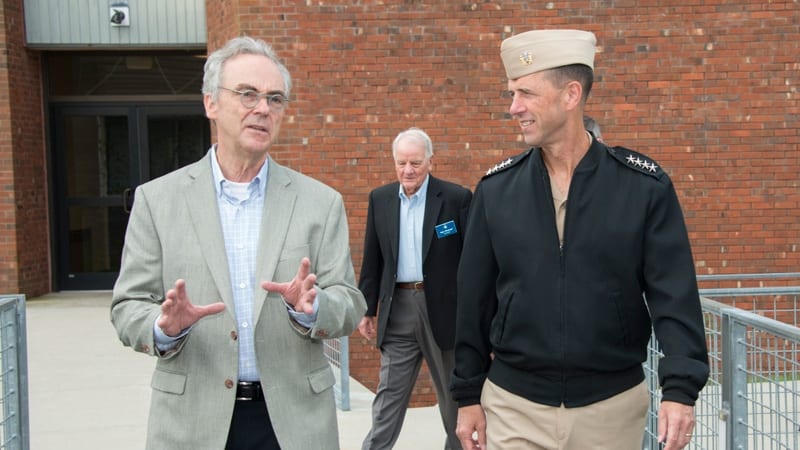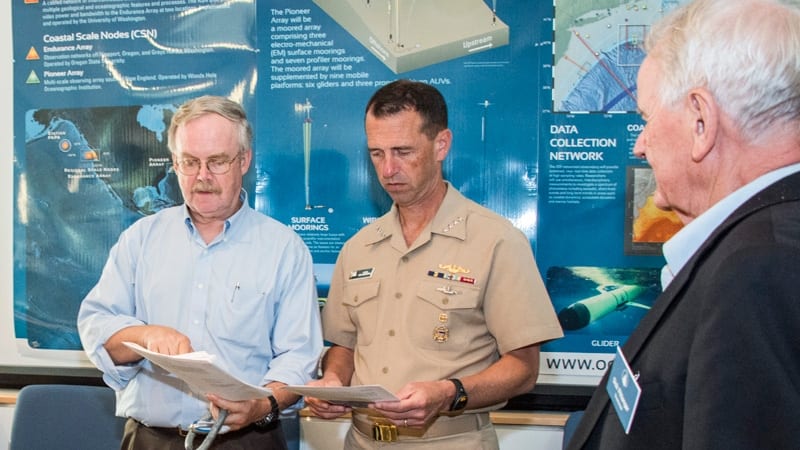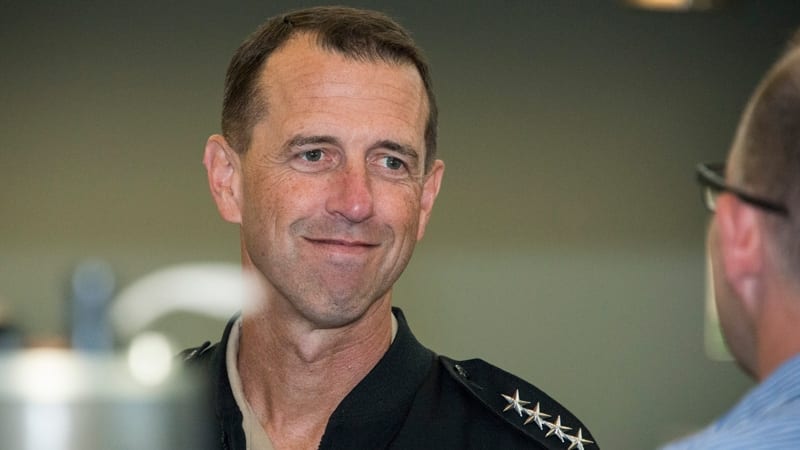Chief of Naval Operations Visits WHOI
September 19, 2016
Global ocean research projects and marine technology advances were among the topics presented on Friday, September 9, when the Chief of Naval Operations (CNO), Admiral John Richardson, paid a visit to the Woods Hole Oceanographic Institution (WHOI).
The CNO is the senior military officer in the Navy. A four-star admiral who is responsible to the Secretary of the Navy, the CNO is a member of the Joint Chiefs of Staff and the principal military advisor to the President and the Secretary of the Navy. Richardson began serving as CNO in September 2015.
Adm. Richardson’s visit was hosted by WHOI President and Director Mark Abbott. During his visit, Richardson toured a number of the Institution’s science and engineering facilities. He also heard from researchers about international collaborations in the Indian Ocean and the East China Sea, and about U.S.-based projects focused on climate, fisheries, and storms and hurricanes.
“Admiral Richardson recognizes the importance of basic ocean science in helping the Navy fulfill its mission,” said Abbott. “WHOI is an important partner with the potential to enhance Naval capabilities and operations. In addition, through our work with scientists around the world, WHOI fulfills a ‘science diplomacy’ role that supports U.S. international relations.”
The Institution is a leader in the development of new technologies, which are critical to U.S. Naval superiority in the ocean. Adm. Richardson heard about the WHOI Center for Marine Robotics (CMR), which brings academia, government, and industry together to advance the field of robotics and create transformative engineering capabilities for ocean research. Engineers with the CMR and other WHOI departments are driving innovation in robotic ocean sensing systems through, among other pursuits, self-learning, networked, robotic vehicles.
Over lunch, Adm. Richardson engaged in discussions with Scott Carper and James Kepper, two Navy officers who are master’s students in the MIT-WHOI Joint Program in ocean science and engineering. The program enables Navy officers to learn from those at the cutting edge of ocean research and to work closely with the technologies used in the ocean environment. Richardson himself earned his master’s degree from the MIT-WHOI Joint Program in 1989.
The CNO’s visit acknowledged the long and productive relationship WHOI has had with the Navy dating back to World War II, when WHOI scientists built instruments called bathythermographs, or BTs, to measure how salinity and temperature changes in the ocean affects the propagation of sound under water. WHOI scientists trained Navy submariners to use BTs to avoid detection from enemy sonar, and in the process saved many lives.
Today, Navy funding accounts for approximately 10 percent of WHOI’s sponsored research budget. WHOI also maintains and operates two Navy-owned research vessels, Atlantis and Neil Armstrong, for use by the U.S. scientific community, and the Navy-owned submersible Alvin—the U.S.’s deepest diving, human-occupied research submarine.
The Woods Hole Oceanographic Institution is a private, independent organization on Cape Cod, Mass., dedicated to marine research, engineering, and higher education. Established in 1930 on a recommendation from the National Academy of Sciences, its primary mission is to understand the ocean and its interaction with the Earth as a whole, and to communicate a basic understanding of the ocean’s role in the changing global environment. For more information, please visit www.whoi.edu.



